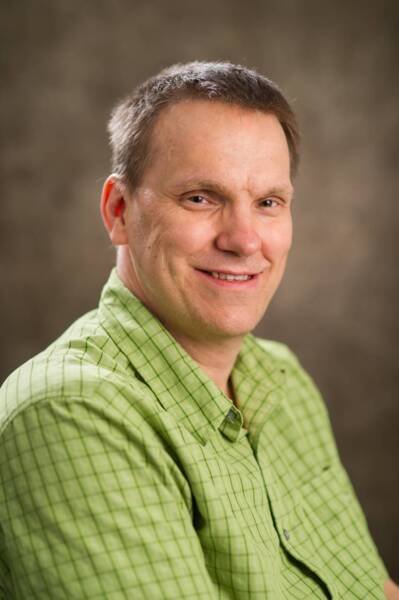The calcium waves in the cell
As a doctoral student, Per Uhlén, Professor of Dynamic Imaging of Intracellular Signalling at the Department of Medical Biochemistry and Biophysics, discovered that the calcium concentration in cells can fluctuate at a certain frequency, roughly like a radio signal. He is now trying to understand the meaning of these signals for the healthy and diseased body.

Calcium ions, Ca2+, are important to a wide variety of cellular processes from the moment of fertilisation and onwards throughout life. Sometimes regular fluctuations occur in the level of calcium in the cells, creating a wave motion that oscillates at a constant frequency. Per Uhlén researches such fluctuations and the role they play in development and in cancer.
“I discovered the phenomenon as a doctoral student and it fascinated me,” he says. “Since I’m originally a physicist, I knew that it’s possible to use maths to analyse oscillating systems.”
His first discovery concerned kidney cells, the calcium level of which starts to fluctuate in twelve-minute cycles when treated with E.coli bacteria. If the same cells are treated instead with digoxin, a different wave pattern emerges of roughly double the
frequency.
Specific signals
“There’s a lot to indicate that the fluctuations are specific signals for intra- and intercell communication,” says Professor Uhlén. “We’ve shown that the cells can interpret these signals but how they are generated and decoded is something we know very little about.”
Professor Uhlén wants to find out more about the role of these calcium fluctuations both in the healthy and in the diseased body. An interesting area in which these wave motions have been observed is cell division, and Professor Uhlén wants to examine the link between the waves and asymmetric cell division, which is essential to physiological development as well as to tumour growth.
“Our plan for the future is to create experiments in which we can artificially control the wave frequencies and analyse how they influence the genes. This would give us valuable information on the function of the signals.”
Text: Anders Nilsson, first published in "From Cell to Society" 2015. Translation: Neil Betteridge.
